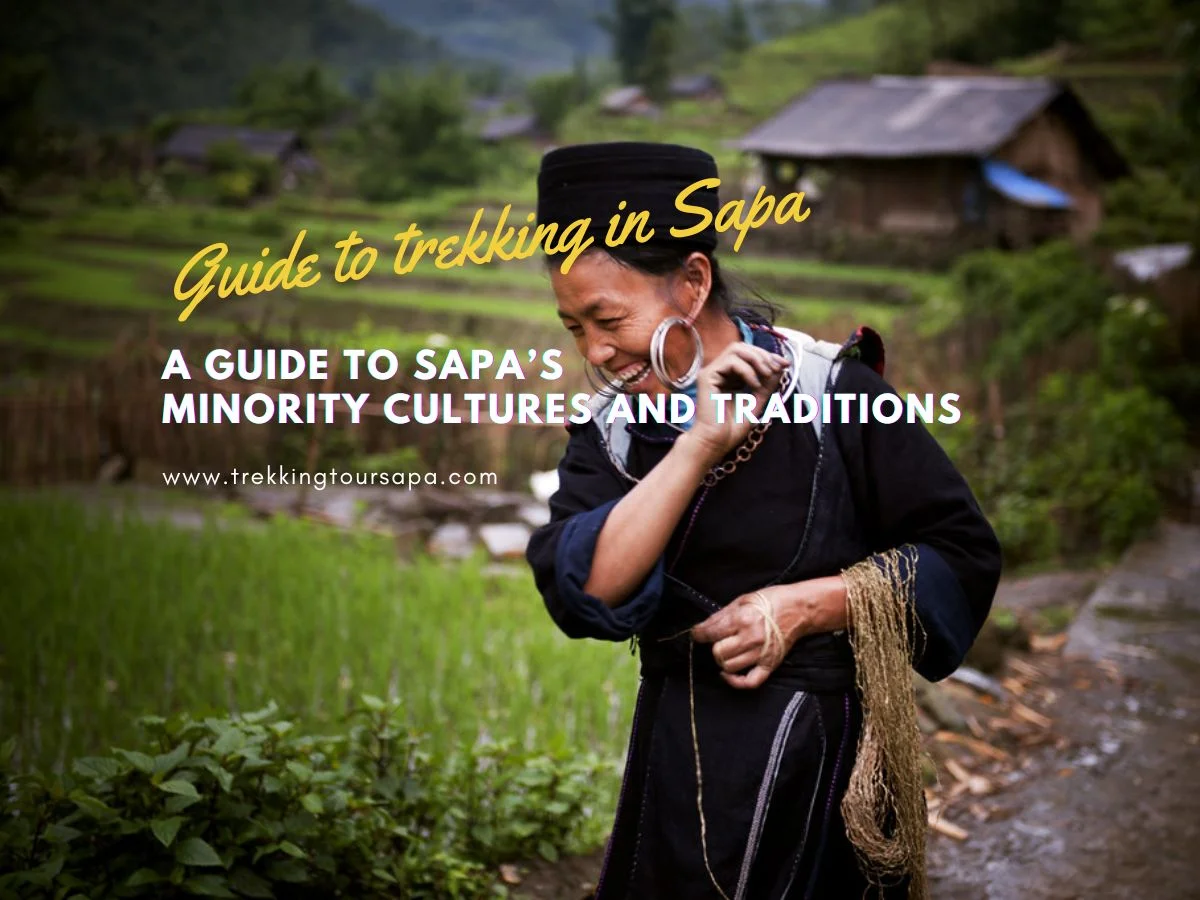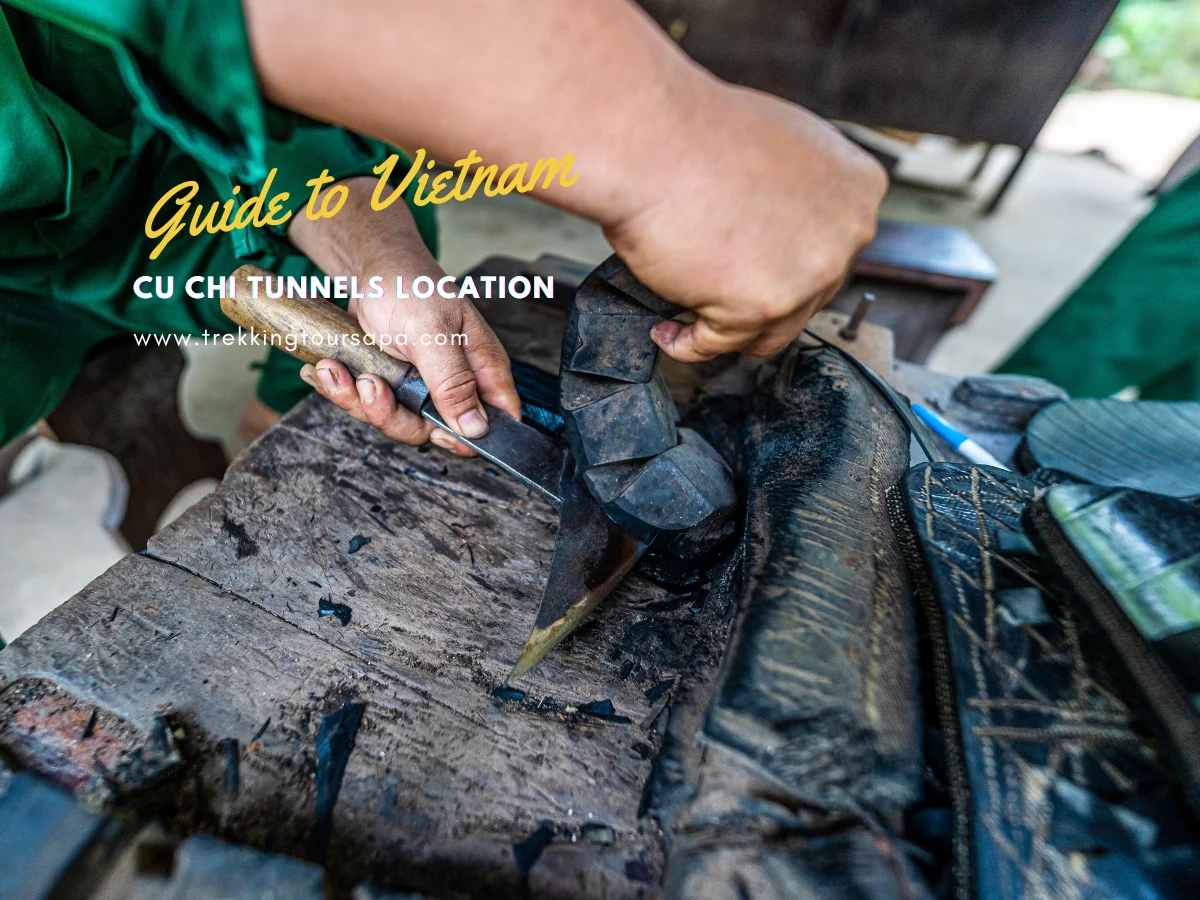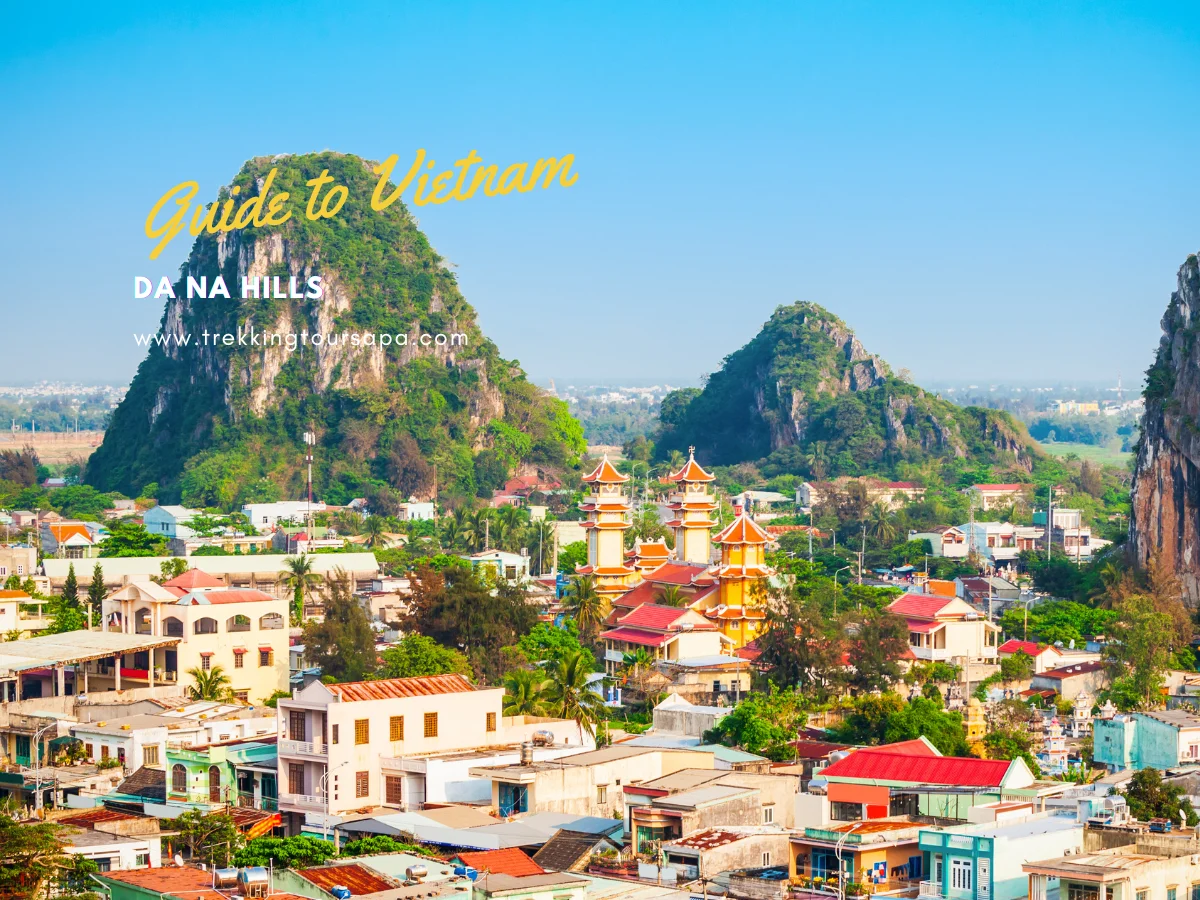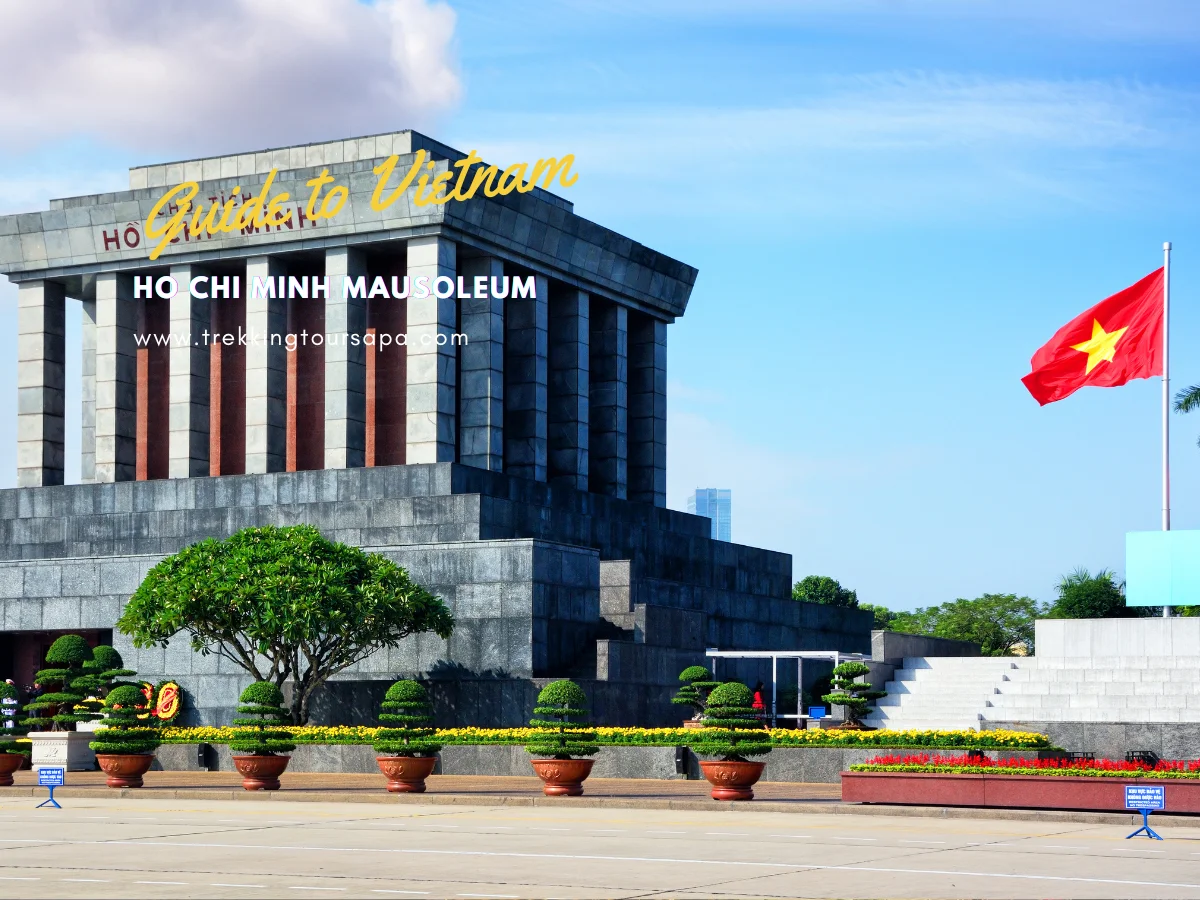Are you looking to explore the rich cultural heritage of Vietnam’s ethnic minorities? Then look no further than Sapa, a mountainous region in northern Vietnam that is home to numerous minority groups. From their traditional handicrafts and local cuisine to their vibrant markets and colorful festivals, Sapa’s minority cultures offer an immersive and unforgettable travel experience.
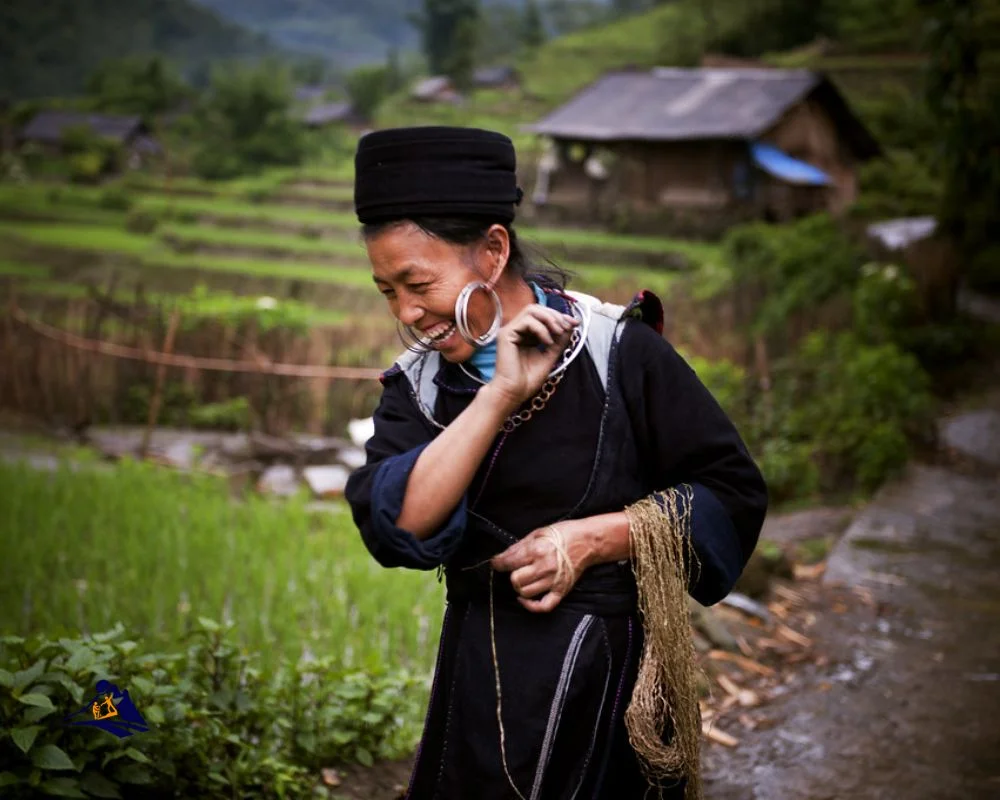
As you wander through Sapa’s winding streets and verdant rice terraces, you’ll encounter communities of Hmong, Dao, Tay, Giay, and Xa Pho people. Each group has its own distinct customs, beliefs, and practices that have been passed down through generations. By learning about these traditions firsthand from the locals themselves, you’ll gain a deeper appreciation for the diversity of Vietnam’s cultural landscape. So pack your bags and get ready to embark on a journey into the heart of Sapa’s minority cultures!
Table of Contents
ToggleOverview of Sapa’s Ethnic Minority Groups
Get a glimpse of the diverse ethnic groups in Sapa with an overview of their unique customs and ways of life. The Hmong, Dao, Giay, Tay, and Xa Pho all have distinct cultures that are reflected in their festivals, clothing styles, and daily practices. For example, the Hmong celebrate their New Year festival from December to January with traditional dances and colorful costumes. Meanwhile, the Dao people place great importance on ancestor worship and make elaborate offerings during important ceremonies.
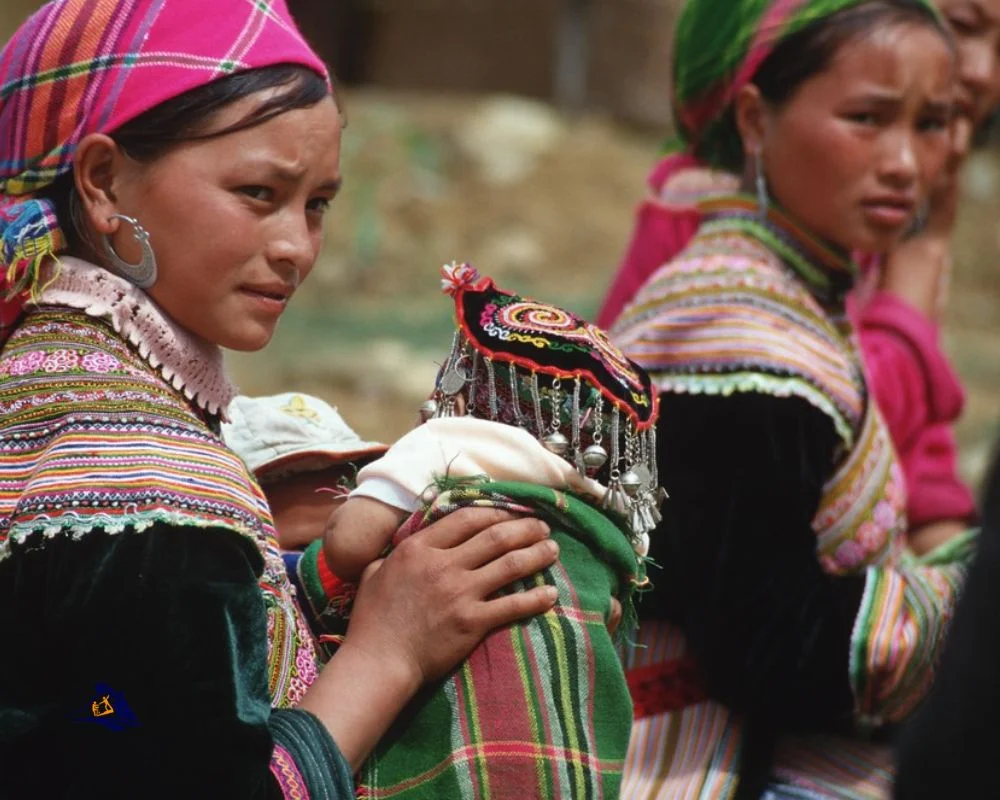
In terms of clothing styles, each group has its own signature attire that reflects their cultural identity. The Hmong women wear long skirts adorned with intricate embroidery while the men don black indigo-dyed jackets. The Giay people are known for their brightly colored clothes made from hand-woven fabric while the Tay women wear headscarves intricately woven with silver thread. These unique traditions have been passed down through generations and continue to be an integral part of these communities’ identities.
As you explore Sapa’s minority cultures and traditions further, you’ll discover many more fascinating aspects such as traditional handicrafts like weaving or silversmithing which we’ll delve into next.
Sapa 1 Day Tours
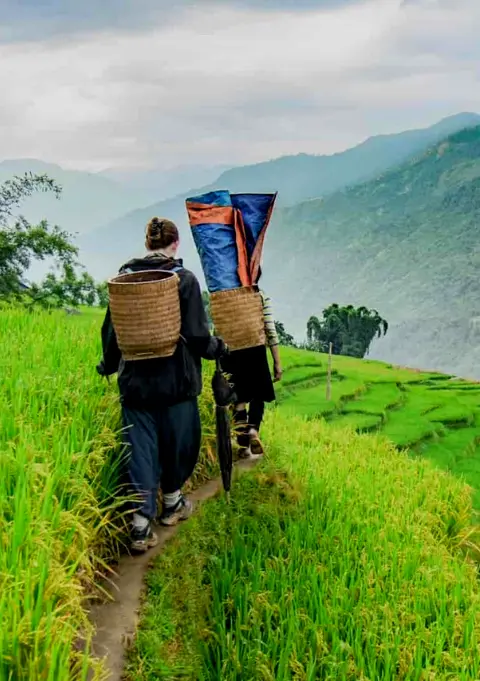
- 1 day experience
- Moderate to challenging
- Cultural immersion & active adventure
- Rice fields, valleys & villages
- Private tours
- Vegan-friendly
Sapa 2 Day Tours
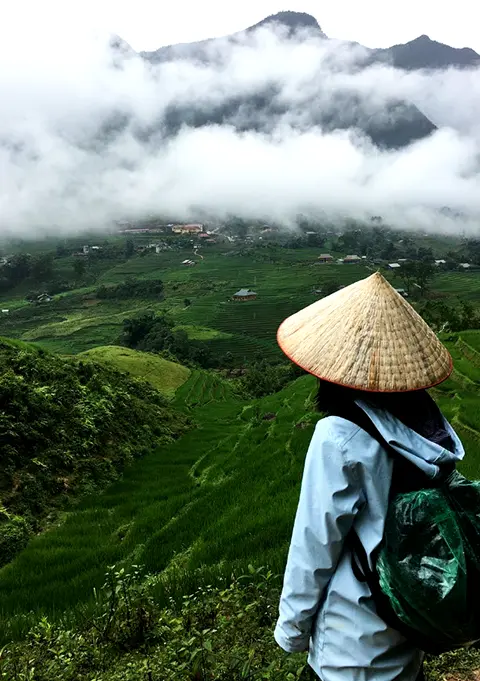
- 2 days 1 night experience
- Moderate to challenging
- Cultural immersion & active adventure
- Mountains, valleys, rice fields and villages
- Private tours
- Vegan-friendly
Sapa 3 Day Tours
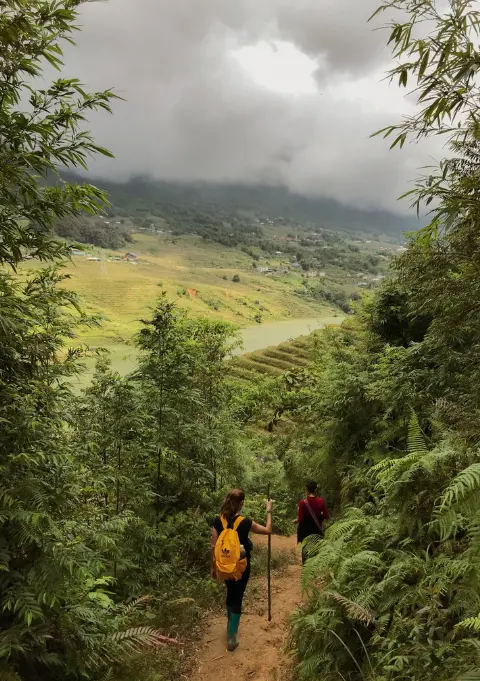
- 3 days 2 night experience
- Moderate to challenging
- Cultural immersion & active adventure
- Mountains, valley, rice fields & villages
- Private tours
- Vegan-friendly
Sapa 4 Day Tours
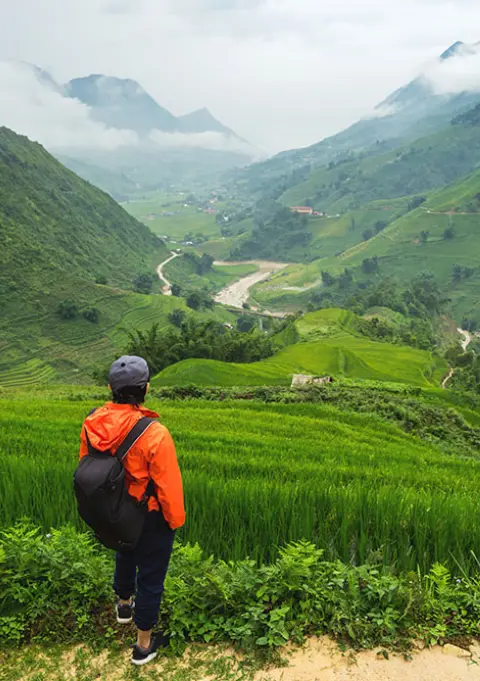
- 4 days 3 night experience
- Moderate to challenging
- Cultural immersion & active adventure
- Mountains, valleys, rice fields & villages
- Private tours – Less Touristic
- Vegan-friendly
Traditional Handicrafts
Traditional Handicrafts in Sapa offer a glimpse into the rich and diverse cultures of its minority groups. Examples of these crafts include the intricate embroideries of the Hmong, the bamboo weaving of the Tay, and the silver jewelry-making traditions of the Red Dao. Visitors have ample opportunities to learn about these crafts from local artisans and purchase unique souvenirs as they explore this charming mountain town.
Examples of traditional crafts
You’ll love seeing the beautiful handiwork of local artisans in Sapa, from intricate embroidery to hand-carved wooden crafts. The craftsmanship techniques used by these talented individuals have been passed down through generations and hold significant cultural meaning.
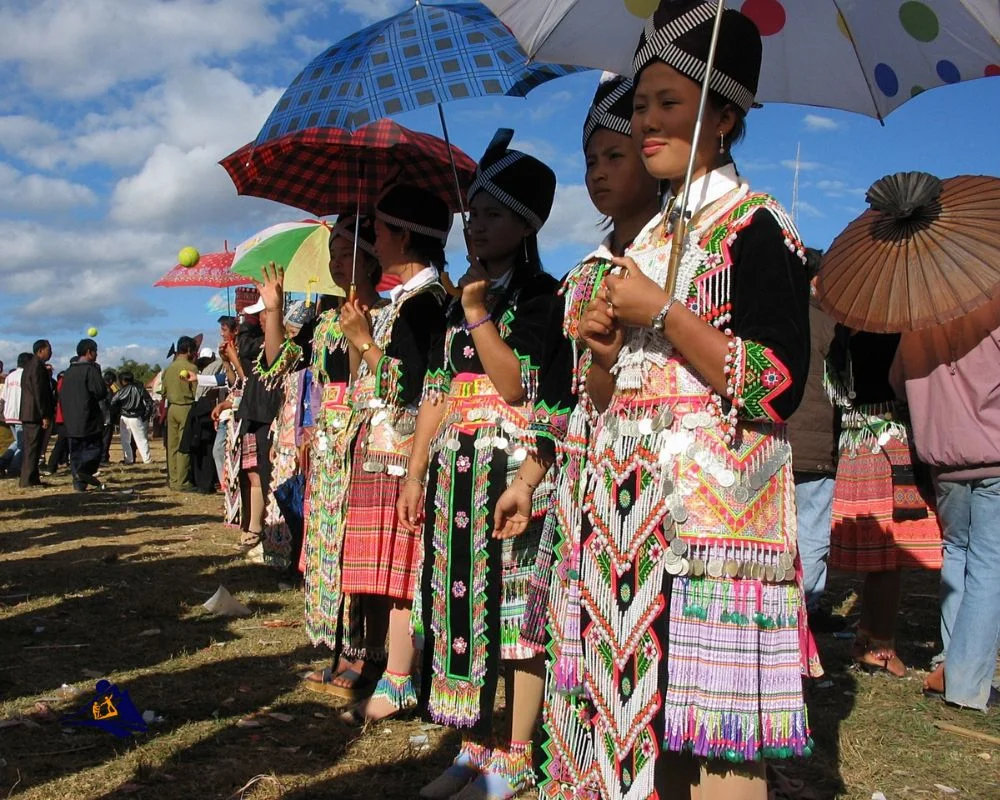
One example of a traditional craft found in Sapa is embroidery. Local Hmong women use brightly colored threads to create intricate patterns on clothing, bags, and other textiles. Each pattern tells a story or represents a specific aspect of their culture. Another example is hand-carved wooden spoons and bowls made by the Red Dao people. These items are not only functional but also serve as decorative pieces with intricate designs carved into them. As you explore the markets and villages in Sapa, take time to appreciate the skill and cultural significance behind each traditional craft you come across.
As you continue your journey through Sapa’s minority cultures and traditions, there will be opportunities to learn about these crafts firsthand and even purchase some for yourself as souvenirs or gifts.
Opportunities to learn and purchase
There are chances to discover and buy local crafts in Sapa, gaining insight into the cultural meanings behind each item. Cultural workshops offer opportunities to learn about the traditional crafts of various minority groups in the region, such as Hmong embroidery and Black Dao silver-making. These workshops provide hands-on experiences that allow visitors to create their own authentic souvenirs while also learning about the significance of these crafts in the daily lives of locals.
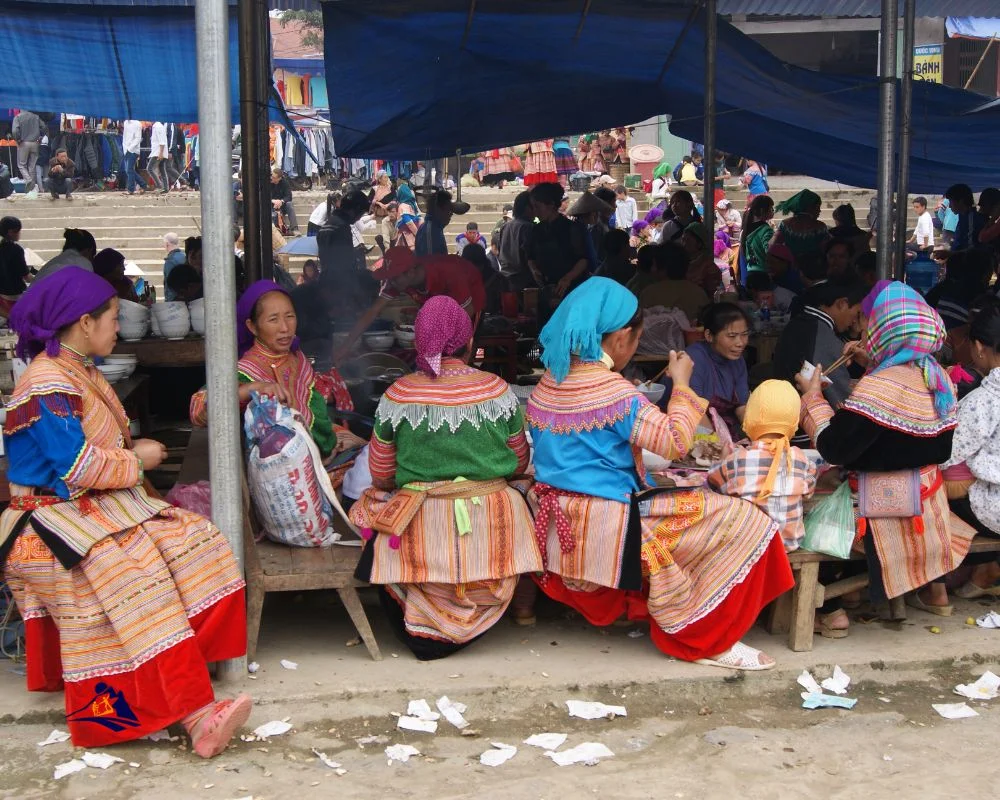
In addition to workshops, there are several markets throughout Sapa where you can purchase local handicrafts. The Bac Ha Sunday Market is one such place, offering a wide variety of goods including colorful textiles, handmade jewelry, and wooden carvings. By purchasing these items directly from local artisans at markets like this one, you not only support their livelihoods but also gain a deeper appreciation for their unique cultures and traditions. After exploring these markets and participating in cultural workshops, it’s time to delve into another aspect of Sapa’s rich heritage: its mouth-watering cuisine.
Local Cuisine
You’re in for a treat with the delectable local cuisine that will tantalize your taste buds and leave you wanting more. Sapa’s minority cultures have their own food specialties that are unique to their tribe, making it an exciting culinary adventure for any food enthusiast. Taste the famous Thang Co soup, made from horse meat, or try some grilled sticky rice cakes called Banh Chung. You can also indulge in steamed fish with ginger and herbs, served in banana leaves.
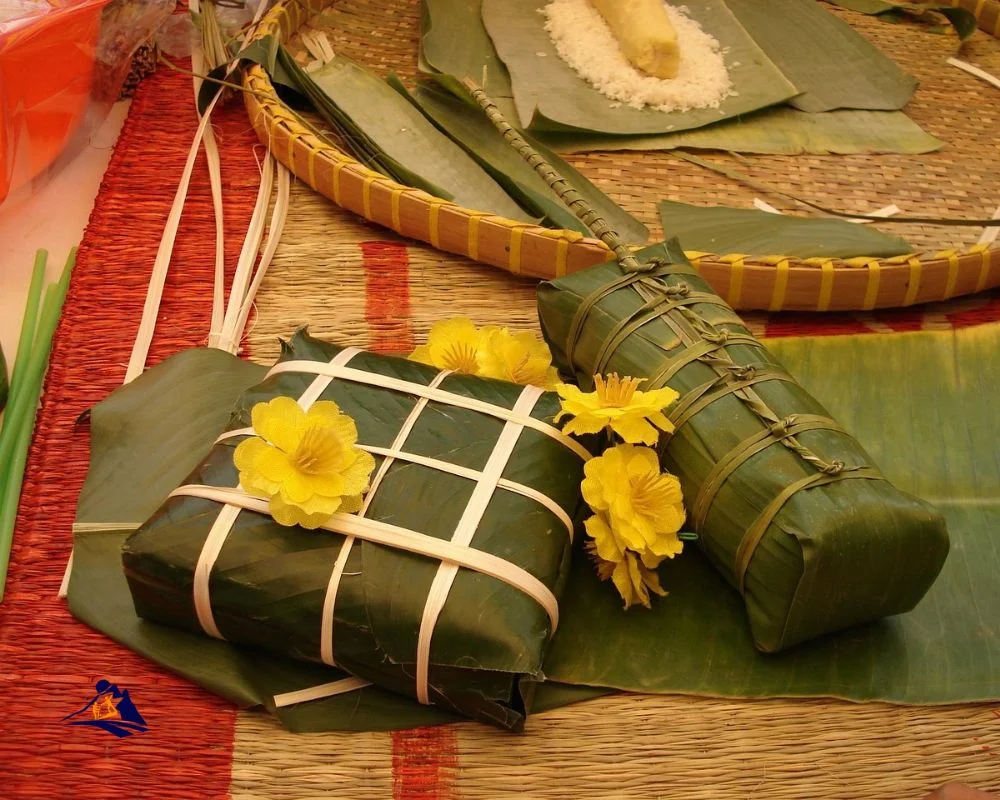
If you’re interested in learning how to cook these dishes yourself, sign up for a cooking class offered by one of the locals. They’ll teach you traditional techniques and share their secret family recipes passed down through generations. Not only will you get to enjoy a delicious meal at the end of your lesson, but you’ll also gain insight into the culture and traditions behind each dish.
As you explore Sapa’s minority cultures through its cuisine, don’t forget to visit the vibrant markets where locals gather to sell fresh produce and homemade goods.
Vibrant Markets
Take a stroll through the bustling markets of Sapa, where you can experience cultural exchange and witness the economic significance of these vibrant marketplaces. Here, you will find an array of colorful produce, fragrant spices, and handcrafted goods made by skilled artisans. The markets are filled with locals from various ethnic groups such as Hmong, Dao, Tay and Giay who come together to buy and sell their wares.

As you wander through the markets, be prepared to haggle for goods at prices that suit your budget. You will also have an opportunity to taste local delicacies like ‘thang co’, a soup made from horse meat and organs or ‘com lam’, sticky rice cooked in bamboo tubes. The energy in these markets is palpable; it’s the perfect place to immerse yourself in Sapa’s culture and way of life. Now that you’ve experienced the vibrancy of Sapa’s markets let’s explore some of its colorful festivals!
Colorful Festivals
Get ready to don your festival attire and join in the celebration as we explore the colorful festivals of Sapa’s minority cultures. These festivals are not just for entertainment; they hold significant cultural significance that reflects the community’s beliefs, traditions, and history.
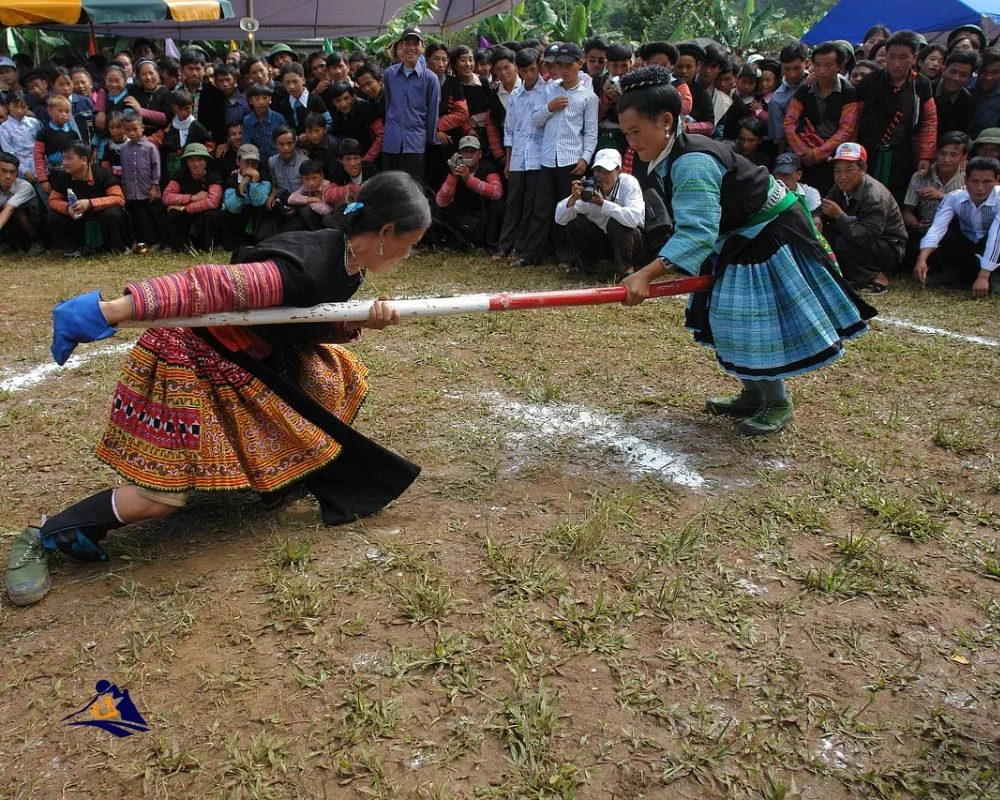
One of the most popular festivals is the “Roong Pooc” of the Flower H’mong people. This festival takes place in January or February when flowers start blooming in Sapa. The Flower H’mong women dress up in their beautiful traditional costumes decorated with intricate embroidery patterns, and men play folk music on bamboo flutes and drums. During this festival, offerings are made to ancestors for good health, prosperity, and protection from evil spirits. It’s a time where families come together to celebrate their heritage through dance performances, food feasts, and socializing with neighbors from other villages.
As you soak up the festive atmosphere, take a moment to appreciate Sapa’s stunning landscapes that add an extra touch of magic to these celebrations!
Sapa 1 Day Tours

- 1 day experience
- Moderate to challenging
- Cultural immersion & active adventure
- Rice fields, valleys & villages
- Private tours
- Vegan-friendly
Sapa 2 Day Tours

- 2 days 1 night experience
- Moderate to challenging
- Cultural immersion & active adventure
- Mountains, valleys, rice fields and villages
- Private tours
- Vegan-friendly
Sapa 3 Day Tours

- 3 days 2 night experience
- Moderate to challenging
- Cultural immersion & active adventure
- Mountains, valley, rice fields & villages
- Private tours
- Vegan-friendly
Sapa 4 Day Tours

- 4 days 3 night experience
- Moderate to challenging
- Cultural immersion & active adventure
- Mountains, valleys, rice fields & villages
- Private tours – Less Touristic
- Vegan-friendly
Stunning Landscapes
Sapa is renowned for its breathtaking natural beauty, with stunning landscapes that will leave you in awe. From towering mountains to cascading waterfalls and lush green rice paddies, there’s no shortage of beautiful sights to explore. Some of the best places to experience Sapa’s natural wonders include Fansipan Mountain, Silver Waterfall, and Muong Hoa Valley.
Overview of Sapa’s natural beauty
You’ll be transported to a world of stunning landscapes and breathtaking scenery as you learn about the natural beauty of Sapa. This region is known for its rolling hills covered in terraced rice paddies, which change colors with the seasons. The area is also home to lush forests and cascading waterfalls that create a serene atmosphere for travelers seeking peace and tranquility.
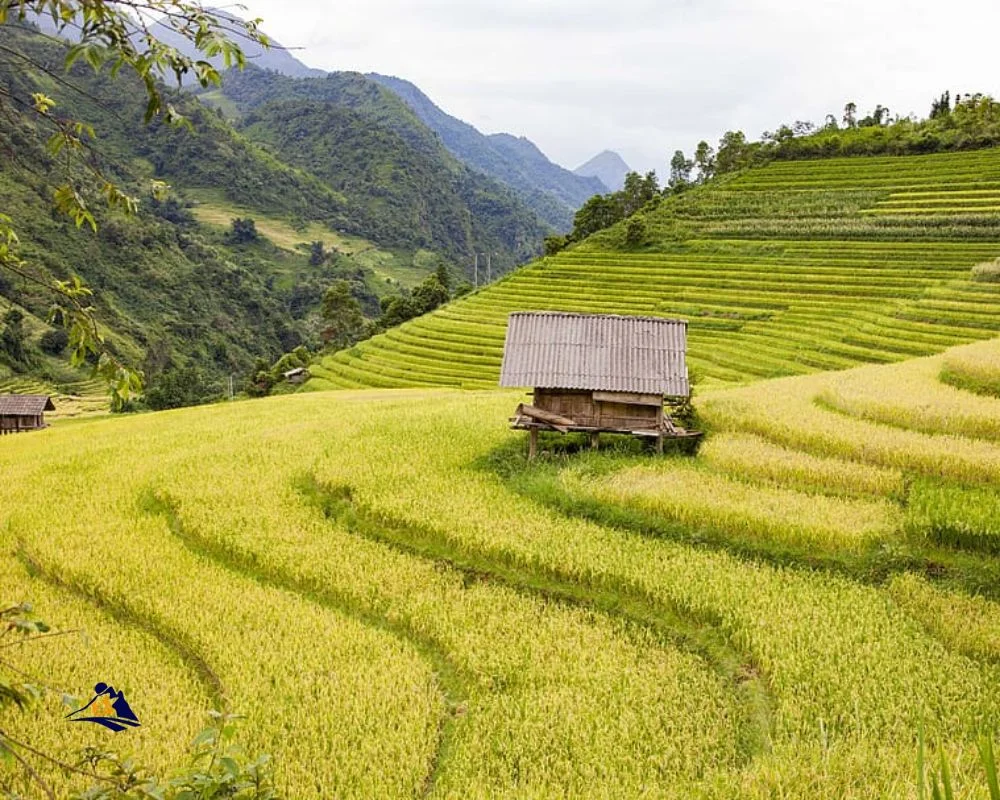
Hiking trails are abundant throughout the region, providing ample opportunities to explore Sapa’s natural wonders. You can venture through valleys and up mountainsides, crossing streams and encountering local wildlife along the way. Whether you’re an experienced hiker or just starting out, there are trails suited for all levels of expertise. So put on your hiking boots and get ready to immerse yourself in Sapa’s natural beauty – there’s no better way to experience it! Now let’s explore some of the best places to see this amazing landscape up close.
Best places to explore
Let’s hit the trails and check out some of the most breathtaking spots in Sapa to get a taste of nature’s bounty. One of the best ways to experience Sapa’s natural beauty is by hiking its many trails. The trek up to Fansipan, Vietnam’s highest peak, may be challenging, but it offers stunning views of the surrounding mountains and valleys. For those who prefer something less strenuous, a hike through Cat Cat Village will take you past cascading waterfalls and terraced rice fields that are sure to take your breath away.
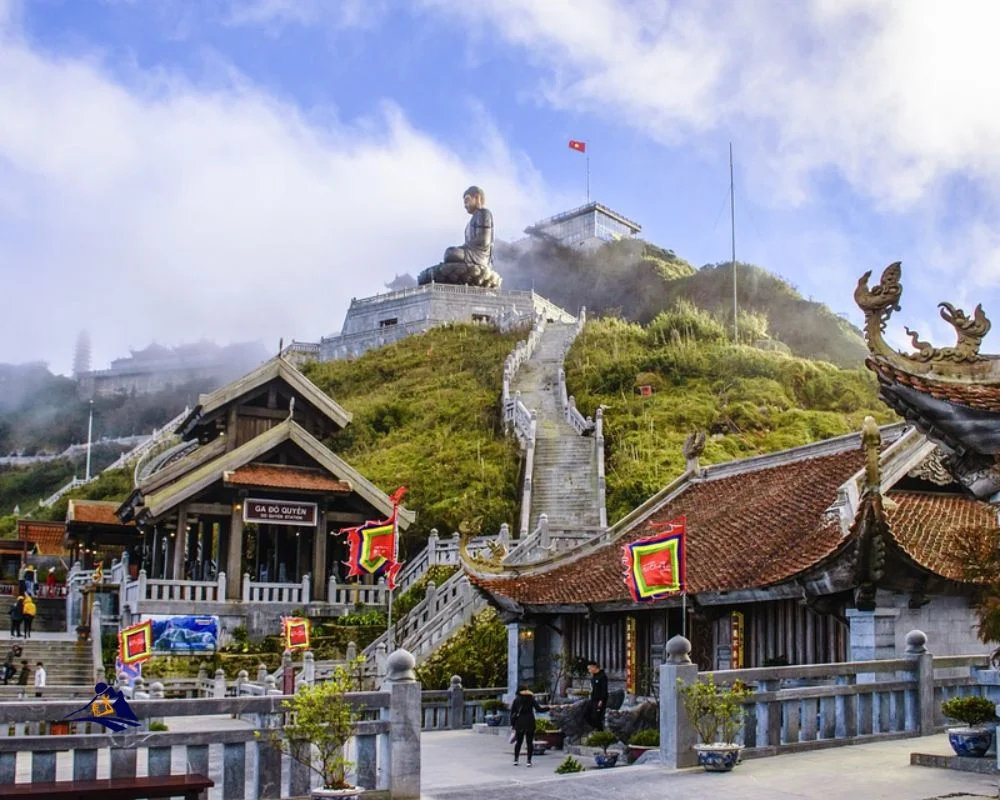
If you’re looking for more than just a scenic hike, consider staying at one of Sapa’s cultural homestays. These accommodations offer an immersive experience into the daily life of local ethnic minorities such as the Hmong or Dao people. You’ll have the opportunity to learn about their customs and traditions firsthand while enjoying authentic home-cooked meals and comfortable lodgings. It’s a great way to not only appreciate Sapa’s natural beauty but also its rich cultural heritage.
Cultural Immersion Opportunities
Immerse yourself in the local culture by participating in cultural workshops offered by the ethnic groups of Sapa. These workshops offer a unique opportunity to learn about traditional practices such as weaving, dyeing, blacksmithing, and cooking. You can also learn about medicinal herbs from shamans and participate in sacred rituals. The Hmong people are known for their intricate embroidery and batik techniques, while the Red Dao people are famous for their herbal baths and silver jewelry making.
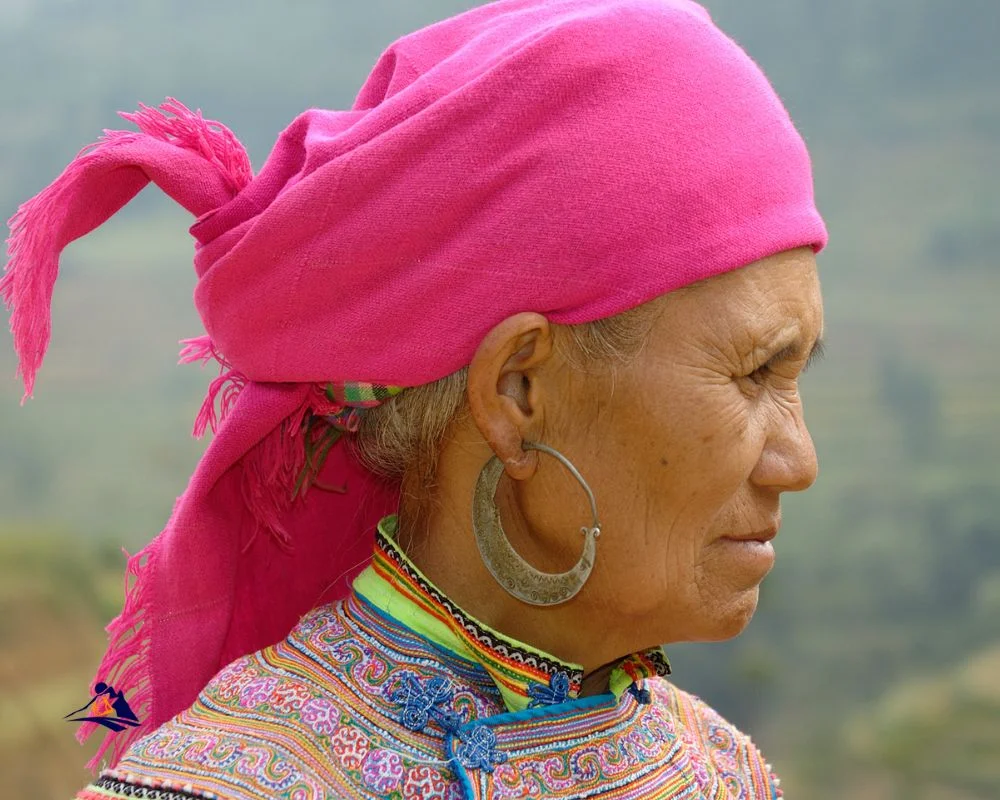
For a more immersive experience, consider staying with a local family through homestay experiences. This allows you to live like a local, eat local cuisine, and learn about daily life firsthand. Homestays range from basic accommodations to luxury options with private rooms and modern facilities. Many homestays also offer guided tours of nearby villages or trekking adventures through rice terraces and mountainscapes. By participating in these cultural immersion opportunities, you can gain a deeper appreciation and understanding of the rich diversity of Sapa’s minority cultures and traditions.
A Guide To Sapa’s Minority Cultures And Traditions Frequently Asked Questions
What are the visa requirements for visiting Sapa?
To visit Sapa, you’ll need to have the appropriate visa requirements and travel documents in order. As a foreigner, you’ll need a valid passport with at least six months of validity left before expiration. Additionally, depending on your country of origin, you may need to apply for a visa prior to your arrival in Vietnam. It’s important to research the specific requirements for your country before booking your trip. Once you arrive in Vietnam, you’ll need to present your passport along with any necessary visas or travel documents at immigration control. With proper planning and preparation, obtaining the necessary visa requirements and travel documents will help ensure a smooth and enjoyable trip to Sapa.
Are there any restrictions on photography in Sapa?
If you’re planning on taking photos during your trip to Sapa, it’s important to be aware of the photography restrictions in place. According to recent statistics, there has been an increase in complaints from locals regarding tourists taking inappropriate or insensitive photos. To avoid causing offense and respect the local culture, it is recommended that you ask for permission before taking someone’s picture and be mindful of what you are capturing in your shots. It’s also important to remember that cultural sensitivity is key when photographing minority cultures and traditions in Sapa. By being respectful and considerate with your camera, you can capture beautiful images while also ensuring a positive experience for everyone involved.
What is the best time of year to visit Sapa?
If you’re looking for the ideal weather conditions to visit Sapa, then plan your trip between September and November when the skies are clear, and temperatures are mild. This is also the perfect time for seasonal activities such as trekking, hiking, and exploring the lush green terraced rice fields. The autumn months offer stunning landscapes with golden hues that will take your breath away. However, if you prefer cooler temperatures, then consider visiting Sapa during December to February when it snows on occasion. Regardless of when you choose to go, Sapa offers something unique and unforgettable every season.
Can tourists participate in traditional cultural ceremonies or rituals?
If you’re interested in cultural immersion and community engagement, you’ll be happy to know that tourists can participate in traditional ceremonies and rituals in Sapa. In fact, according to a survey conducted by the Ministry of Culture, Sports and Tourism, more than 70% of visitors actively seek out opportunities to engage with local communities. By participating in these traditions, tourists not only gain a deeper appreciation for the culture but also contribute to the preservation of these unique practices. From joining a Hmong wedding procession to learning how to make rice wine with the Red Dao people, there are plenty of opportunities for travelers to connect with Sapa’s minority cultures and traditions. So don’t be afraid to step outside your comfort zone and fully embrace this authentic experience.
Are there any specific etiquette rules that visitors should be aware of when interacting with the local communities in Sapa?
When visiting the local communities in Sapa, it’s important to be aware of etiquette expectations and cultural sensitivity. While it may be tempting to take pictures or ask personal questions, it’s crucial to remember that you are a guest in their community. Be respectful of their customs and beliefs, and always ask for permission before taking photos or participating in any ceremonies. Additionally, dress modestly and avoid anything that may offend locals such as revealing clothing or public displays of affection. By being mindful of these cultural norms, you will not only show respect but also gain a deeper understanding and appreciation for the rich traditions of Sapa’s minority cultures.
Conclusion
So, you’ve learned all about the fascinating minority cultures and traditions of Sapa. It’s time to pack your bags and head out to this incredible destination! Get ready to immerse yourself in a world full of vibrant colors, delicious food, stunning landscapes, and warm hospitality.
As you explore the ancient handicrafts, indulge in local cuisine, wander through bustling markets, witness colorful festivals, and soak up the breathtaking scenery; you’ll find that Sapa is not just another travel destination – it’s an experience that will stay with you forever. From trekking through rice terraces to discovering hidden waterfalls or simply observing daily life in the villages; every moment spent here is filled with wonder and awe.
So what are you waiting for? Book your trip today and discover firsthand why Sapa is one of Vietnam’s most enchanting destinations. You won’t be disappointed – but be warned: once you visit Sapa, it will be hard to leave this magical place behind!
Sapa 1 Day Tours

- 1 day experience
- Moderate to challenging
- Cultural immersion & active adventure
- Rice fields, valleys & villages
- Private tours
- Vegan-friendly
Sapa 2 Day Tours

- 2 days 1 night experience
- Moderate to challenging
- Cultural immersion & active adventure
- Mountains, valleys, rice fields and villages
- Private tours
- Vegan-friendly
Sapa 3 Day Tours

- 3 days 2 night experience
- Moderate to challenging
- Cultural immersion & active adventure
- Mountains, valley, rice fields & villages
- Private tours
- Vegan-friendly
Sapa 4 Day Tours

- 4 days 3 night experience
- Moderate to challenging
- Cultural immersion & active adventure
- Mountains, valleys, rice fields & villages
- Private tours – Less Touristic
- Vegan-friendly
